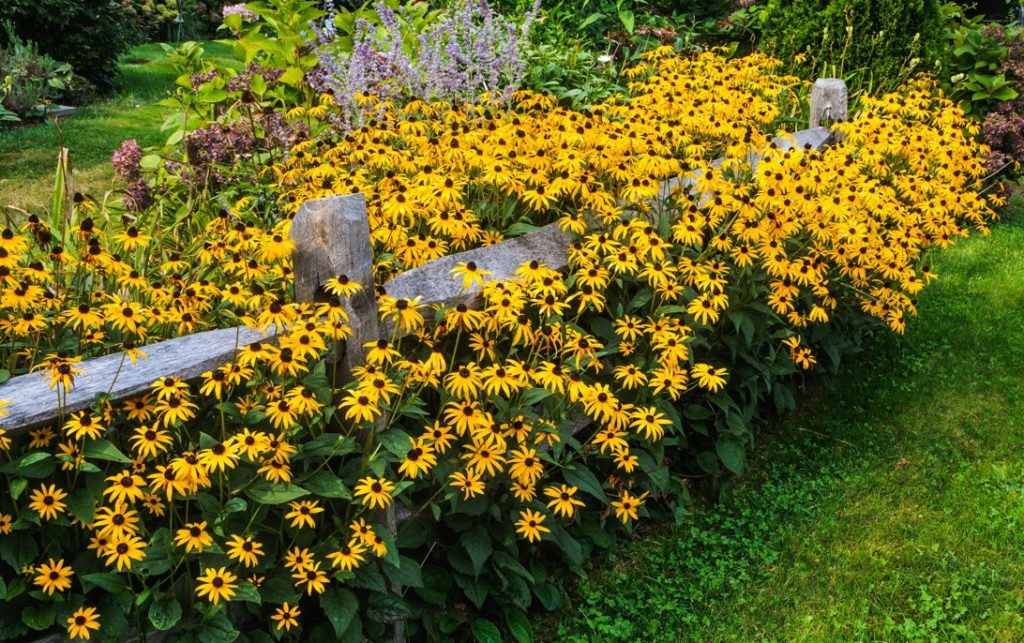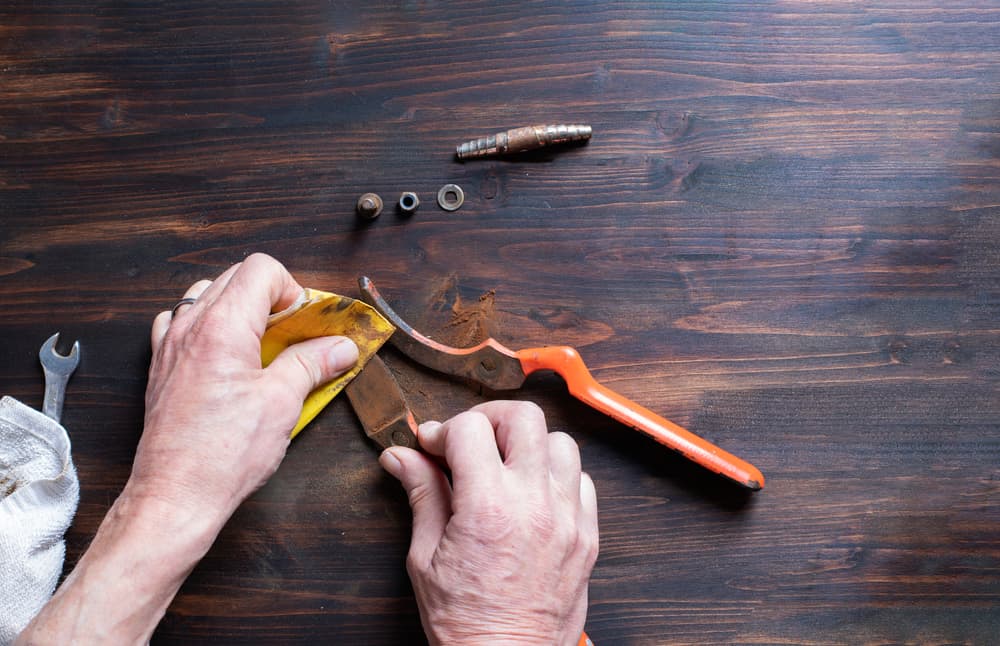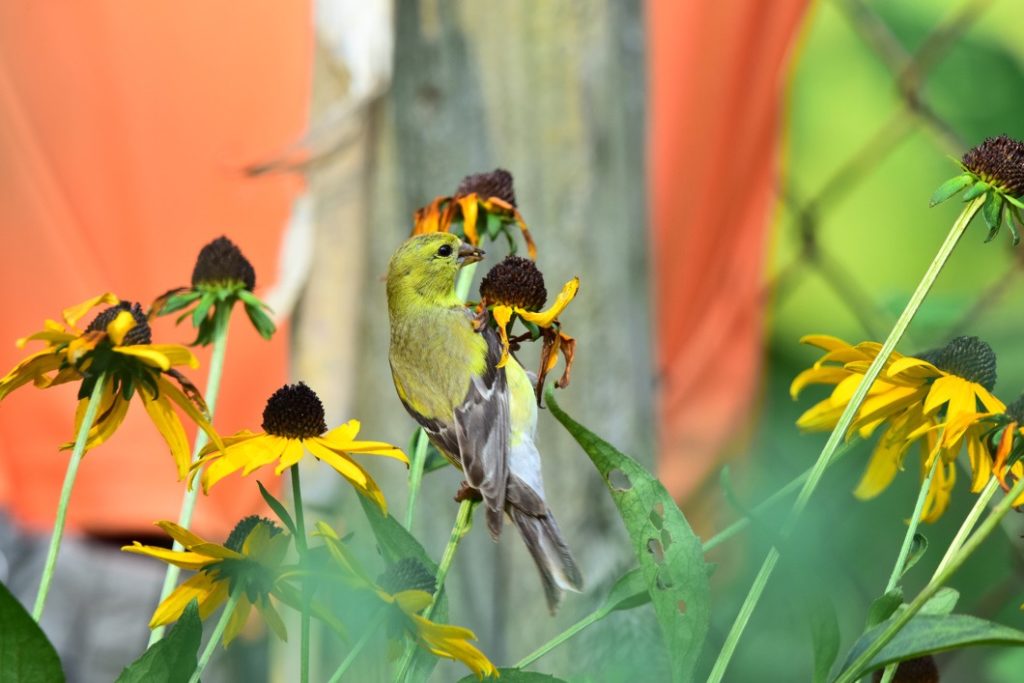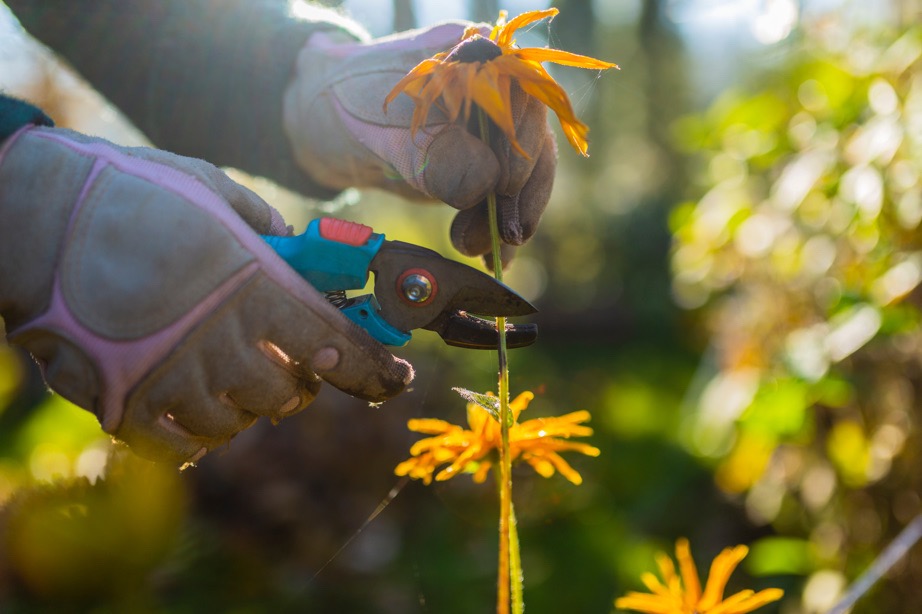PERENNIALS > RUDBECKIA > PRUNING
Reviewed By COLIN SKELLY

Colin is a Horticulturist and Horticultural Consultant with experience in a range of practical and managerial roles across heritage, commercial and public horticulture. He holds the Royal Horticultural Society’s Master of Horticulture award and has a particular interest in horticultural ecology and naturalistic planting for habitat and climate resilience.
IN THIS GUIDE
RUDBECKIA GUIDES
Common Problems
Dividing
Growing From Seed
Planting
Pruning
Varieties
Also known as black-eyed or brown-eyed Susans, Rudbeckias are cheerful plants with a lengthy blooming season and decent resilience to the British climate.
Having said that, they will benefit from regular pruning in order to extend their blossoms for as long as possible – as well as to keep them from propagating all over the place.
Although not strictly necessary, pruning will certainly enhance the aesthetic appeal and practical qualities of your plant, while cutting it back will promote new growth the next year.
To do so, follow these steps:
- Clean and/or sharpen your cutting tools
- Cut back well during early spring
- Deadhead finished flowers throughout the blooming season
If you’d like more of a detailed guide on any of those specific steps, just keep reading!
| Difficulty | Easy |
| Equipment Required | Gardening gloves, pruning shears, cloth, isopropyl alcohol, mulch |
| When To Prune | Spring and summer |
When To Prune
You can cut back your rudbeckia plants any time after they have finished blooming, though waiting until springtime is preferable.
That’s because the spent flowers will provide vital nutrition in the shape of seeds for birds throughout autumn and winter, while fallen growth will insulate their roots over the colder months.

In June, July and August, it is advisable to keep your pruning shears at the ready and deadhead any spent blossoms as soon as they appear.
This will prevent seed production, which propagates the plant and diverts energy away from blossoming.
“Rudbeckias are popular in naturalistic plantings because of their associability with grasses and other perennials,” shares Colin Skelly, a Horticultural Consultant.
“This style of planting doesn’t require deadheading, as the spent blooms are part of the aesthetic and allow self-sowing.
“If you are deadheading, remember that the more you remove, the less seed there will be for the birds.”
1) Clean Your Tools
One step that is often overlooked in plant care of all types is maintaining your tools.
Blunt shears can damage a plant’s stems and stunt its growth, while dirty blades can spread diseases.

As such, be sure to keep the blades of your pruning shears as sharp as possible, replacing them every few years if necessary.
Clean them before use and also afterwards, by soaking a clean rag in isopropyl alcohol, making sure to wipe the blades firmly to remove all impurities.
Wear gardening gloves throughout this process.
2) Cut Back During Early Spring
As mentioned above, you can cut back your rudbeckia plant earlier than spring, though if you do remove fallen growth, be sure to replace it with 2-3 inches of mulch to insulate the roots.
Leaving the spent blooms in place is a good idea to feed your local bird population.

When the time comes, cut the entire plant back to just above the soil level, making sure to cut at a 45° angle to prevent moisture build-up from rainwater.
Rake away any fallen growth and replace it with a fresh layer of mulch.
3) Deadhead Throughout The Blooming Season
If you want to maintain beautiful blooms for as long as possible, you need to make sure that your rudbeckia does not become distracted by seed production during the summer months.
That means keeping an eye out for spent blossoms and tackling them as soon as they appear.

When deadheading, you can prune stems with just a single spent blossom all the way back to where they join the main stem.
For those with multiple blossoms (not all of which are spent), simply remove the offending flowerhead.
Repeat as necessary.


